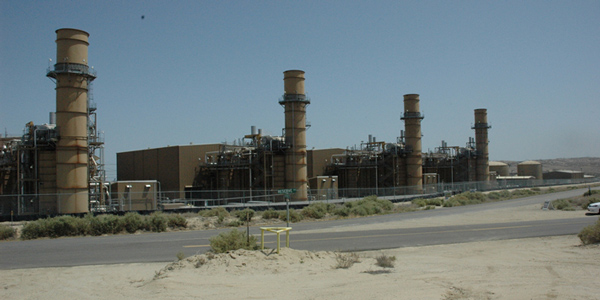By Jason Fordney
CAISO is facing criticism over fundamental aspects of an initiative meant to keep needed generating resources from retiring prematurely, with state regulators saying the program will fail to meet its goals and others questioning the ISO’s rationale for the plan.
The ISO faces the challenge of aligning the risk-of-retirement program with resource adequacy (RA) contracting in order to prevent double-paying resources for reliability. Market participants have carefully analyzed the plan’s two proposed windows in April and November of each year to apply for a Capacity Procurement Mechanism Risk-of-Retirement Enhancements (CPM ROR) designation. (See CAISO Finalizes Risk-of-Retirement Program Changes.)
In comments filed this week regarding CAISO’s draft final proposal for the program, the California Public Utilities Commission and Office of Ratepayer Advocate (ORA) said they oppose the current version of the initiative, which the Board of Governors is due to vote on at its Nov. 1-2 meeting.
PUC staff in comments said that inclusion of the April window within the CPM ROR process gives resources undue insight into RA program price discovery. The process must also better align with the ISO’s Reliability-Must-Run and Temporary Suspension of Resource Operations (TSRO) initiatives, the agency said.
The agency said it “remains concerned that moving a CPM ROR determination to a date prior to the conclusion of the year-ahead procurement process will result in front-running the RA bilateral procurement process.”
CAISO has altered the cost threshold requirement for obtaining a “Type 2” designation during the April window, rolling back a previous stipulation that a resource may not submit an ROR request for April unless its costs exceed the CPM soft offer cap. Type 2 refers to a request by an RA or a non-RA resource for designation in the calendar year following the current RA compliance year.
The latest proposal would require that a resource attest that it “reasonably believes” its annual fixed costs meet or exceed certain price thresholds.
But the PUC said that “this change to the proposal does not further mitigate the issue of front running the RA procurement process. If anything, it does the opposite because a generator no longer must demonstrate that its costs are above the soft offer cap, but to only attest that its costs exceed the relevant thresholds.” The agency said that resources could use market power to achieve the procurement vehicle that yields the most revenue.
‘Other Flaws’
The ORA said it does not support the proposal “because it is unlikely to effectively address the issue of early retirement of resources and could significantly increase ratepayer costs.” It said it believes that the program would allow resource owners to know if they are eligible for CPM payments before the RA contracting period begins. Because CPM generally pays more, that would unfairly tilt the bargaining process between load-serving entities and CPM resources.
“Other flaws of the draft final proposal include its failure to define resource retirement, its reliance on anecdotal information rather than a quantification of the currently known risks associated with resource retirements, and the proposal to provide capacity payments to resources before they are needed for reliability,” the ORA said.
The Western Power Trading Forum (WPTF) criticized fundamental elements of the proposal, saying it is struggling to see how the current proposal was not RMR with more obligations on the retiring resource.
WPTF said CAISO should introduce two windows to submit offers for CPM ROR designation “with no obligation to prove costs are above an artificial, irrelevant dataset.” It said the proposal to compare a resource’s costs with average RA contract prices is “ridiculous” since the average price has nothing to do with the current RA market in any one area.
Calpine said that while some resource owners may find the ISO’s modifications workable, Calpine does not.
“The time-crunch imposed on resources is only exacerbated when one imposes a ‘no front-running’ ban on backstop procurement,” Calpine said, calling it a “timing dissonance” that features in other CAISO retirement-related programs as well.
In March, the CAISO board approved the ISO’s request to designate two Calpine natural gas-fired plants in Northern California as RMR despite criticism from several stakeholders. (See CAISO RMRs Win Board OK, Stakeholders Critical.)
While the company does not object to the plan, it does not think the program will be used in any meaningful way by resources making rational business planning decisions. Requests for compensation must be reviewed by FERC, so resources would not know their cost recovery until well into the CPM contract.
CAISO has also proposed that CPM designations become mandatory as RMR designations are, but Calpine opposes that change.
Some Support
The Six Cities group of Southern California municipal utilities said it generally supported the proposal, but suggested some modifications, while CAISO’s Department of Market Monitoring did not oppose it.
The department said the proposal allows resources to know earlier in the year whether they will receive a CPM designation, making it a more viable option for resources considering retirement.
“This is an improvement over the current risk-of-retirement CPM process which occurs too late in the year to be of practical use,” the department said. “Several aspects of the proposal reduce the likelihood that a resource will submit inefficient retirement requests.”
Southern California Edison supported the proposal, while Pacific Gas and Electric said it has “not addressed the current CPM limitations that resulted in using the CAISO reliability-must-run tariff provisions for reliability procurement.”




